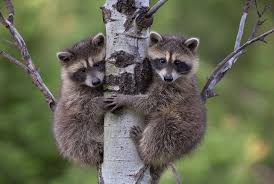Stamp: Raccoon (United States of America 2025)
Raccoon (United States of America 2025)
23 May (United States of America ) within release Baby Wild Animals (2025) goes into circulation Stamp Raccoon face value FOREVER No Face Value
| Stamp Raccoon in catalogues | |
|---|---|
| Colnect codes: | Col: US 2025.05.23-01f |
Stamp is vertical format.
Stamp from double-sided booklet. Imperforate bottom and left. Face value US$0.73 on day of issueAlso in the issue Baby Wild Animals (2025):
- Se-tenant - Baby Wild Animals face value 10*FOREVER;
- Booklet - Baby Wild Animals face value 20*FOREVER;
- Stamp - Bear face value FOREVER;
- Stamp - Bobcat face value FOREVER;
- Stamp - Chipmunk face value FOREVER;
- Stamp - Deer face value FOREVER;
- Stamp - Deer face value FOREVER;
- Stamp - Fox face value FOREVER;
- Stamp - Fox face value FOREVER;
- Stamp - Owl face value FOREVER;
- Stamp - Rabbit face value FOREVER;
- Stamp - Raccoon face value FOREVER;
- Stamp - Raccoon face value FOREVER;
- Stamp - Seal face value FOREVER;
- Stamp - Skunk face value FOREVER;
- Stamp - Skunk face value FOREVER;
Stamp Raccoon it reflects the thematic directions:
Animals are multicellular, eukaryotic organisms of the kingdom Animalia (also called Metazoa). All animals are motile, meaning they can move spontaneously and independently, at some point in their lives. Their body plan eventually becomes fixed as they develop, although some undergo a process of metamorphosis later on in their lives. All animals are heterotrophs: they must ingest other organisms or their products for sustenance.
Mammals are any vertebrates within the class Mammalia (/məˈmeɪli.ə/ from Latin mamma "breast"), a clade of endothermic amniotes distinguished from reptiles (including birds) by the possession of a neocortex (a region of the brain), hair, three middle ear bones and mammary glands. All female mammals nurse their young with milk, secreted from the mammary glands. Mammals include the largest animals on the planet, the great whales. The basic body type is a terrestrial quadruped, but some mammals are adapted for life at sea, in the air, in trees, underground or on two legs. The largest group of mammals, the placentals, have a placenta, which enables the feeding of the fetus during gestation. Mammals range in size from the 30–40 mm (1.2–1.6 in) bumblebee bat to the 30-meter (98 ft) blue whale. With the exception of the five species of monotreme (egg-laying mammals), all modern mammals give birth to live young. Most mammals, including the six most species-rich orders, belong to the placental group. The largest orders are the rodents, bats and Soricomorpha (shrews and allies). The next three biggest orders, depending on the biological classification scheme used, are the Primates (apes and monkeys), the Cetartiodactyla (whales and even-toed ungulates), and the Carnivora (cats, dogs, seals, and allies).
The raccoon , also spelled racoon and sometimes called the common raccoon or northern raccoon to distinguish it from the other species, is a mammal native to North America. It is the largest of the procyonid family, having a body length of 40 to 70 cm (16 to 28 in), and a body weight of 5 to 26 kg (11 to 57 lb). Its grayish coat mostly consists of dense underfur, which insulates it against cold weather. The animal's most distinctive features include its extremely dexterous front paws, its facial mask, and its ringed tail, which are common themes in the mythologies of the Indigenous peoples of the Americas surrounding the species. The raccoon is noted for its intelligence, and studies show that it is able to remember the solution to tasks for at least three years. It is usually nocturnal and omnivorous, eating about 40% invertebrates, 33% plants, and 27% vertebrates.


